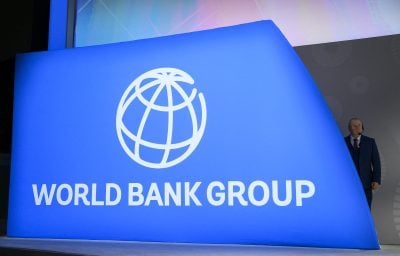While it is still too early to be able to count the cost of the Ebola epidemic on the economies of the three West African countries effected, there is little doubt that the impact will be dire. Two of the three countries involved enjoyed double-digit growth rates before the disease struck. Can they recover? By Dr Karamo NM Sonko*.
According to the African Development Bank, in 2013 Africa continued to defy the global economic slowdown with growth in sub-Saharan Africa posted at 5% (including South Africa). West Africa, with a growth rate of 7% (same as in 2012), was the gold medallist among all the subregions, including North Africa. In March 2014, a little-known disease started to pose a very serious threat to that enviable position.
Last September, after a series of very positive electronic and telephone exchanges, and a meeting in Burj Al Arab in Dubai, an Australian company that was keenly considering the possibility of investing in a mining project in Mauritania suddenly developed cold feet.
The reason, according to their chairman, an Africa-optimist with very long experience in the continent, was that no one was excited about West Africa any more: the cause – Ebola! Australian geologists were resigning their jobs and returning home and there were rumours of an Ebola case in Queensland.
Shortly after this decision, another Australian investor who was looking at a project in Sudan sent me a message: “I have decided to look a bit closer to home”. The fear of Ebola was greater than the distance from Sudan to West Africa!
In the second week of November, eight months after the first announcement of the outbreak, Ebola had claimed 1,142 lives in Guinea, 2,836 in Liberia and 1,169 in Sierra Leone. Isolated cases were reported in Mali, Nigeria, Senegal, Spain and the US.
Throughout our history, mankind has been afflicted by one epidemic or the other. Since the second part of the last century, we have been subjected to a record number of universalised diseases (such as malaria, AIDS and now Ebola), which have spread at incredible speed across boundaries. This is because while, on one hand, technology has reached heights never seen before, on the other hand poverty, population pressure and many other challenges associated with modern development have made us vulnerable to new forms of diseases.
More than the much-feared, but now known, diseases of malaria, cancer and AIDS, for example, the obscure Ebola strikes terror even from its very African-sounding name! The disease is relatively new (although first identified in 1976) and sounds very much like another terror from the jungle in a continent that is unfairly regarded as the home of deadly viruses.
Unlike AIDS, for instance, Ebola kills quickly. Similar to the reaction to AIDS when AIDS was first uncovered, people tend to exaggerate how infectious and contagious Ebola is. It is this combination of reality, fear and exaggeration that is affecting the lives in Guinea, Liberia and Sierra Leone and influencing the attitudes of the international community towards these countries.
Although it is too early for most people to contemplate the effects of Ebola on these economies and West Africa as a whole (as the priority is how to find a vaccine), the issue will become increasingly important. The extent of the negative impact would depend on how long it takes to find a vaccine or cure and how widespread the current epidemic gets.
Steve D Cashin, founder of the Pan African Capital Group in Washington, DC, one of the biggest post-war investors in Liberia, said that “Ebola is a horrible disease. It has destroyed much progress that has been made over the past decade in the three countries it is most prevalent in. I have seen its impact in Liberia, where it has wreaked havoc on the healthcare system, closed the schools, and brought an aspiring economy to a halt.”
The Liberian economy grew by 8.1% in 2014 and it is expected to grow by 6.8% and 8.2%, in 2014 and 2015, respectively. The engine of growth lies in the extractive sector (iron ore, palm oil and other forestry products). But these figures do not take into account the impact of the disease. Since the end of the civil war, Liberia has benefited from a good governance dividend under President Ellen Johnson Sirleaf, as illustrated by $16bn of FDI commitments and plans for large-scale infrastructure and energy projects.
Foreign capital is not the only requirement, foreign skills are also essential for the execution of new projects and sustaining existing ones. Locally, there is already a tremendous reduction in economic and social activity; expatriate staff have left the country en masse, schools are closed and work hours have become very irregular.
Want to continue reading? Subscribe today.
You've read all your free articles for this month! Subscribe now to enjoy full access to our content.
Digital Monthly
£8.00 / month
Receive full unlimited access to our articles, opinions, podcasts and more.
Digital Yearly
£70.00 / year
Our best value offer - save £26 and gain access to all of our digital content for an entire year!
 Sign in with Google
Sign in with Google 


